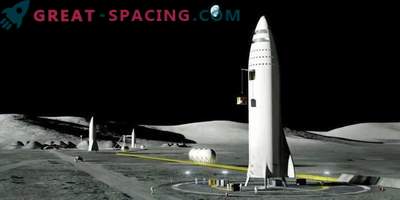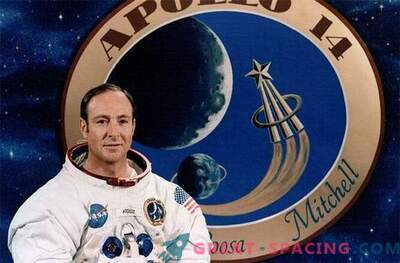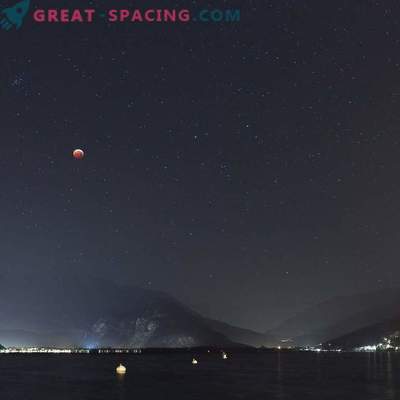
Apollo 14, landing on the moon 45 years ago (February 5, 1971), is widely known for several events. Captain Al Shepard (Al Shepard) played golf on the moon. Ed Mitchell (Ed Mitchell), a former pilot of the lunar module, conducted an experiment without the knowledge and permission of NASA, and the radar refused to work normally, which, however, did not prevent a successful landing.
But half a century later, new information appeared about this mission. Including the Apollo project archive, which includes thousands of “forgotten” photos recently posted on the Flickr service. Here are a few diamonds extracted from this archive.
Earth Sickle

The Apollo mission astronauts were so far from Earth that they could just hide it from their gaze with their thumb. A striking fact: the sickle on Earth (one quarter), which you see hanging above the lunar module, indicates the reverse phase in which the moon was at that time when viewed from the Earth (three quarters). And the Earth does not move across the sky in the same way as the Moon.
Breath in a box
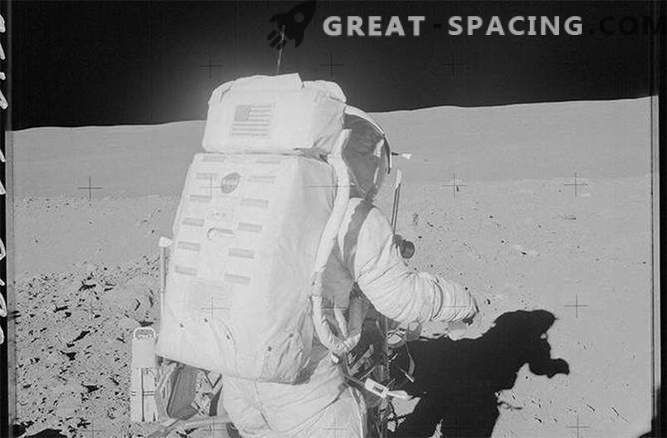
In this snapshot, you can see the Portable Life Support System (PLSS), which supports astronauts living on the surface of the Moon, creating pressure, supplying oxygen and water. The amount of cool air supplied to the astronaut in the spacesuit can be changed with a flick of a switch, allowing astronauts to get slightly cooled air if they move quickly. Logbook entries indicate the effectiveness of this solution. However, the captain of Apollo - 16, John Young (John Young) later said that he was “frozen in an icicle” during the rest, although the temperature of the stream was average.
Transportation of rock samples
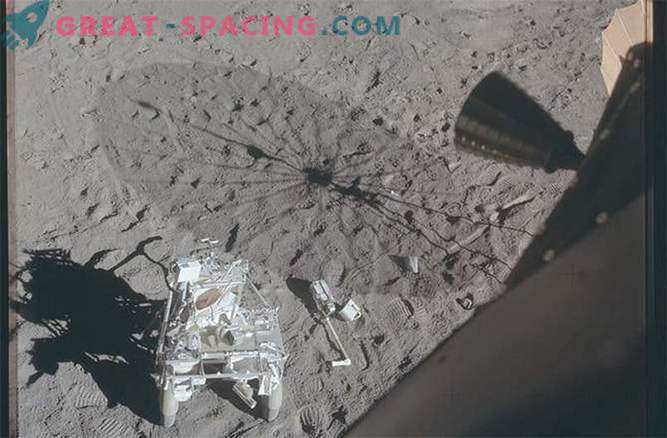
From the window of the lunar module, astronauts could see the Modular conveyor (left) intended for carrying equipment. He was a small cart that was contemptuously called a rickshaw. With a weight of 26 pounds (10, 4 kg, according to Earth standards), she could carry a weight four times her own. Rickshaw was an excellent helper for transporting rock samples and equipment needed to study the surface of the moon. Nevertheless, the rough landscape of our space satellite sometimes became the reason that the conveyor was stuck, forcing Mitchell and Shepard to transfer it from time to time manually above the surface.
Dirty surface
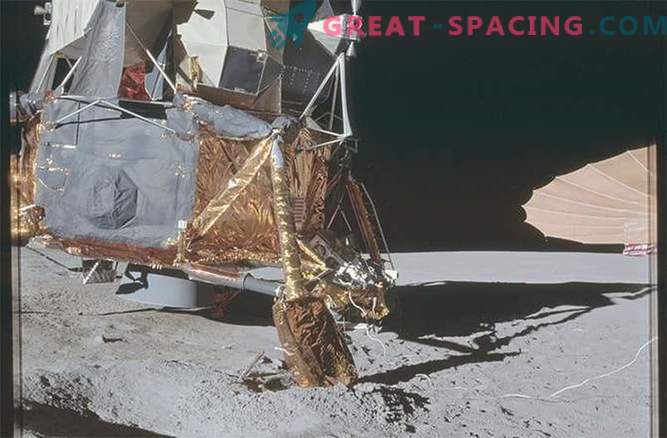
The Apollo Astronauts - 14 took several photographs of their lunar Antares module, captured on the lunar soil - the regolith. This allowed specialists on Earth to draw conclusions about how successfully he coped with his tasks, so his follower worked during the Apollo 15 mission with an increased load. The subsequent mission itself was longer than this, and a trolley was also added to the module. In the photo you can see the dust around one of the legs of the module. Since the surface was powdered, astronauts found that regolith (lunar soil) perfectly compacted only a few centimeters from the surface.
Electric sense
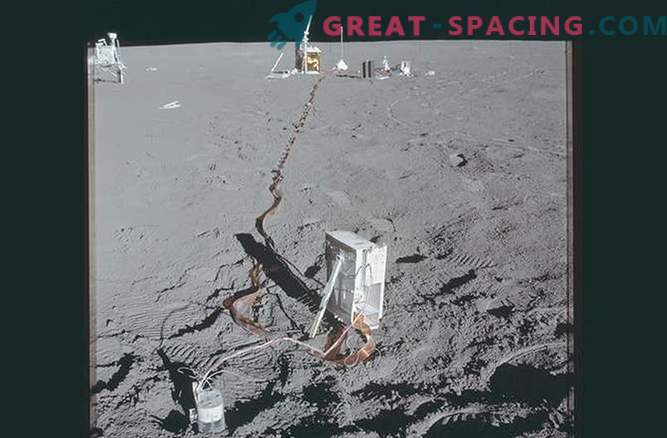
In the foreground of this photo you see equipment brought by Apollo - 14 to the moon for experiments. This device, called the Suprathermal Ion Detector Experiment (SIDE), was designed to monitor the interaction of the solar wind — a constant stream of particles — and the Moon as it passes through the Earth’s magnetic field. Sometimes during the experiment, after the impacts of micrometeorites, ions were detected, which, presumably, were the wind that arose after the collapse of cosmic cobblestones.
Dusted
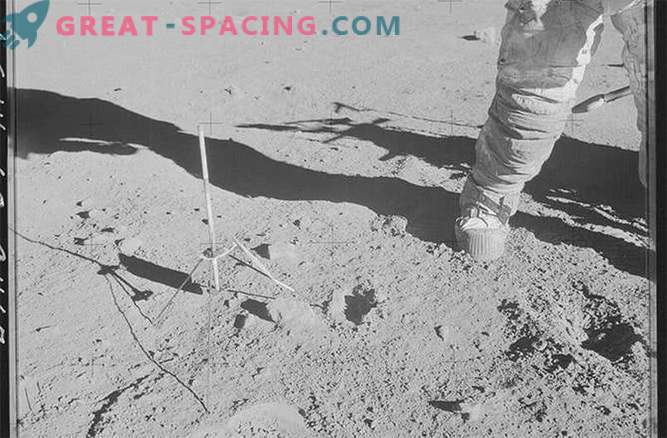
When astronauts go to the moon, one of their main concerns is dust. No matter how carefully they try to get rid of her, going back inside the lunar module. The part still remains stuck. Then she tends to get huddled everywhere - in the hair, experiments, even in the mouth. One of the astronauts of the Apollo mission - 17 said that he had a peculiar dust heat. Several astronauts stated that it smells like black powder, but the chemical reactions that led to this conclusion are still not precisely defined.
Luxurious loneliness
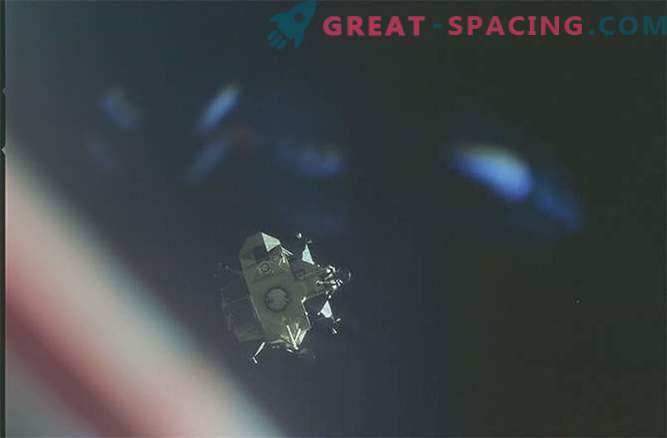
This is one of the photos in which Stu Roosa, the pilot of the command module, captured Antares, carried away into the distance, with his two comrades inside. He planned to spend a few days alone in the Orion command module, taking photographs of the moon and insuring his comrades in case they urgently needed to leave the surface. Like most of the pilots of the command module, Ruza did not notice loneliness - the opportunity to stretch your legs and take a bath in close Apollo was perceived as a pleasant luxury.
Back home

The photo taken from the command module captures the moment when Shepard and Mitchell returned from the lunar surface. The command module underwent some changes after an almost fatal explosion that damaged the oxygen reservoir and other vital parts of the spacecraft. But Shepard said he was confident that NASA and the design engineers would find a solution to the problem. According to him, said during a historic interview in 1998, this added a bit of comfort to them and increased the time for training, but they were completely sure that all problems would be resolved.




